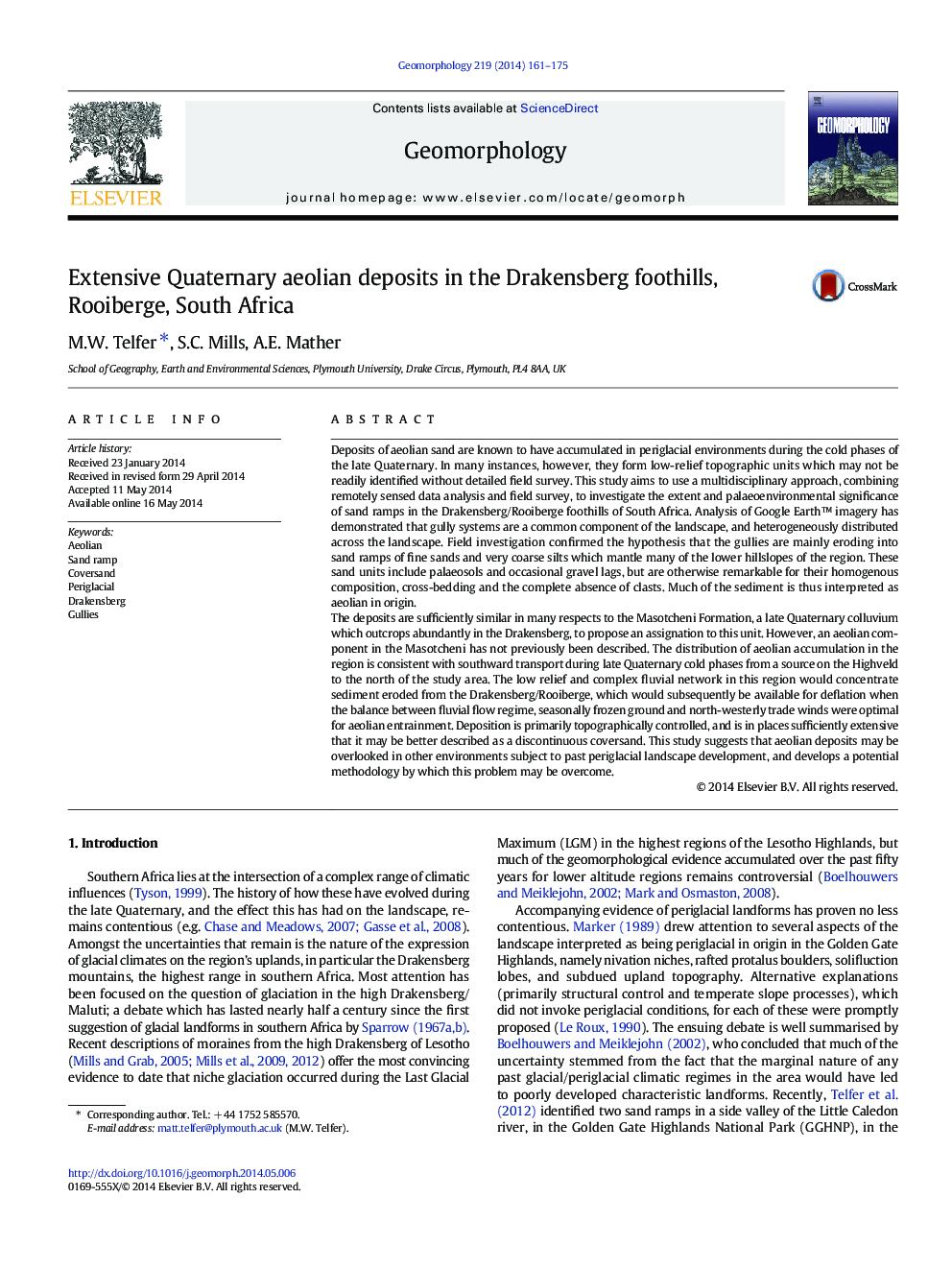| کد مقاله | کد نشریه | سال انتشار | مقاله انگلیسی | نسخه تمام متن |
|---|---|---|---|---|
| 6432460 | 1635430 | 2014 | 15 صفحه PDF | دانلود رایگان |

- Extensive aeolian sand deposits identified in Drakensberg foothills.
- Combination of remote sensing and fieldwork identifies low-relief landforms.
- Distribution of aeolian deposits is the key control on gullying in the area.
- Periglacial conditions during the late Quaternary are implied.
Deposits of aeolian sand are known to have accumulated in periglacial environments during the cold phases of the late Quaternary. In many instances, however, they form low-relief topographic units which may not be readily identified without detailed field survey. This study aims to use a multidisciplinary approach, combining remotely sensed data analysis and field survey, to investigate the extent and palaeoenvironmental significance of sand ramps in the Drakensberg/Rooiberge foothills of South Africa. Analysis of Google Earth⢠imagery has demonstrated that gully systems are a common component of the landscape, and heterogeneously distributed across the landscape. Field investigation confirmed the hypothesis that the gullies are mainly eroding into sand ramps of fine sands and very coarse silts which mantle many of the lower hillslopes of the region. These sand units include palaeosols and occasional gravel lags, but are otherwise remarkable for their homogenous composition, cross-bedding and the complete absence of clasts. Much of the sediment is thus interpreted as aeolian in origin.The deposits are sufficiently similar in many respects to the Masotcheni Formation, a late Quaternary colluvium which outcrops abundantly in the Drakensberg, to propose an assignation to this unit. However, an aeolian component in the Masotcheni has not previously been described. The distribution of aeolian accumulation in the region is consistent with southward transport during late Quaternary cold phases from a source on the Highveld to the north of the study area. The low relief and complex fluvial network in this region would concentrate sediment eroded from the Drakensberg/Rooiberge, which would subsequently be available for deflation when the balance between fluvial flow regime, seasonally frozen ground and north-westerly trade winds were optimal for aeolian entrainment. Deposition is primarily topographically controlled, and is in places sufficiently extensive that it may be better described as a discontinuous coversand. This study suggests that aeolian deposits may be overlooked in other environments subject to past periglacial landscape development, and develops a potential methodology by which this problem may be overcome.
Journal: Geomorphology - Volume 219, 15 August 2014, Pages 161-175